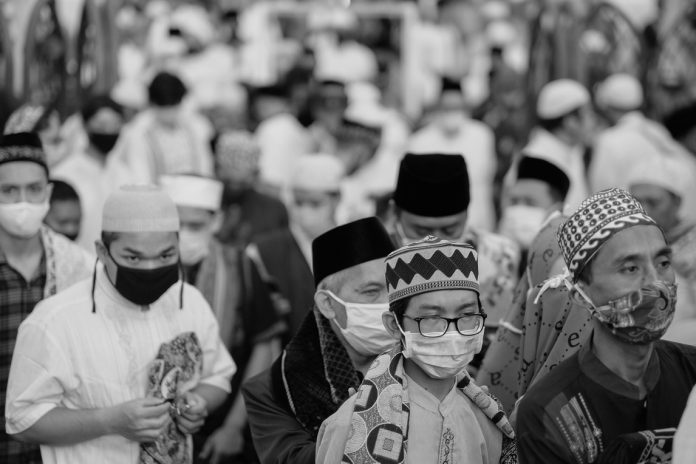Kathy Peach, Director at Nesta’s Centre for Collective Intelligence Design, discusses the potential to improve healthcare
When the COVID-19 pandemic arrived, the imposition of physical distancing rules resulted in a drastic and sudden reduction of real-life social interactions. It marked the (temporary) end of large gatherings, and crowds of people were to be avoided at all costs.
Yet, crowds of people have also emerged as the unlikely hero in this pandemic; crowds of scientists around the world sharing data and insights faster than ever before; crowds of local makers manufacturing PPE for hospitals failed by supply chains; and crowds of ordinary people organising through mutual aid groups to look after each other. So how can we continue to harness the power of crowds for healthcare needs beyond the pandemic?
At Nesta’s Centre for Collective Intelligence Design, we believe that the collective intelligence of crowds can help relieve some of the increasing pressures on healthcare systems globally. Collective intelligence (CI) can be understood as the enhanced capacity that is created when people work together, often with the help of technology, to mobilise a wider range of information, ideas and insights. CI emerges when these contributions are combined to become more than the sum of their parts, for purposes ranging from learning and innovation to decision-making.
In the most recent round of our Grant Programme, several experiments explored ways in which collective intelligence could improve healthcare and we’re now able to share the actionable insight generated from their results.
Using serious games to train AI models for medical diagnosis
Microscope diagnosis for global diseases, such as malaria, requires specialist time and resources, making it unaffordable and often inaccessible for many people, particularly those in lower- and middle-income countries. In response to this, med-tech Spotlab conducted an experiment to find out if citizens playing online games could be as effective as physicians in training AI models for diagnosing neglected tropical diseases (by analysing digitised blood samples).
The AI models were trained by volunteers (adults and school children) performing medical image analysis while playing serious online games (through a website or app).
The accuracy of models were then tested against the performance of medical specialists. The experiment found that AI models trained on images annotated by both adults and school children can obtain similar results to ones trained on physician-based annotations, of around 93% accuracy. Not only that, the accuracy was near identical regardless of when either the annotation was from only adults or only school children.
Harnessing the wisdom of crowds for more accurate medical diagnosis
The Istituto di Scienze e Tecnologie della Cognizione (ISTC), in collaboration with the Max Planck Institute for Human Development (MPIB) and the Human Diagnosis Project (Human Dx), investigated how to harness the wisdom of crowds for more accurate medical diagnosis.
The team knew that finding ways to help doctors and nurses avoid medical misdiagnosis would save thousands of lives every year. It led to them exploring whether AI tools known as knowledge graphs could help physicians on a large medical crowdsourcing platform, called the Human Diagnosis Project (HumanDx), produce more accurate medical diagnoses. The experiment aggregated findings from groups of up to ten medical professionals by using knowledge graphs, and compared this to individual diagnoses to understand which method (collective or individual) was most accurate.
And the findings were impressive. The aggregated result or ‘collective diagnosis’ was 92% accurate, compared to the individual diagnoses, which were only 57.5%.
Matchmaking patients to power their own medical research
Just One Giant Lab (JOGL) and Open Humans Foundation (OHF) knew that for many people with chronic illness, they know more about their own health than any doctor. Patients with long-term health problems have always banded together to support one another, and at times even produce their own research.
This dynamic has accelerated in the social media era, yet the larger a community gets, the faster it can lose focus – and momentum. They wanted to fix that and tested whether matchmaking between skills and needs among patients on a collective intelligence platform would increase engagement in patient-led research projects. To run the experiment, the team combined a platform for DIY biology-makers (JOGL), and a patient-led research platform (Open Humans), enabling the two groups to collaborate to develop solutions for managing health conditions.
One project culminated in the development of Quantified Flu, a health tool for monitoring physiological symptoms (e.g. increased heart rate and temperature) as an early warning for COVID-19, for people who were particularly vulnerable due to pre-existing health conditions.
The collective design and implementation of Quantified Flu resulted in highly engaged users and low dropout rates compared to other mHealth tools. The matchmaking system found that directing participants with specific skills to projects that require that skill (e.g. coding) significantly increased the likelihood of the participant engaging with the project.
In each of these three experiments, we’ve glimpsed what could be possible for the healthcare sector if we harness the complementary strengths of crowds and technologies in the right way. Yet more research and experimentation is needed to help understand how best to design, deliver and scale projects that successfully use human-machine cooperation, and take them into the real world. As the fight against Coronavirus continues, and healthcare needs around the world become more complex, we’re calling on others to join us in taking on this challenge.
We need academic institutions to set up dedicated research programmes, more collaboration between disciplines, and investors to launch large-scale funding opportunities for collective intelligence R&D. As the experiments funded by our grants programme show, collective intelligence has huge potential for society, and we hope that this will encourage more people to test this approach and more funders to direct their resources to collective intelligence.
It would truly have the potential to transform healthcare.











